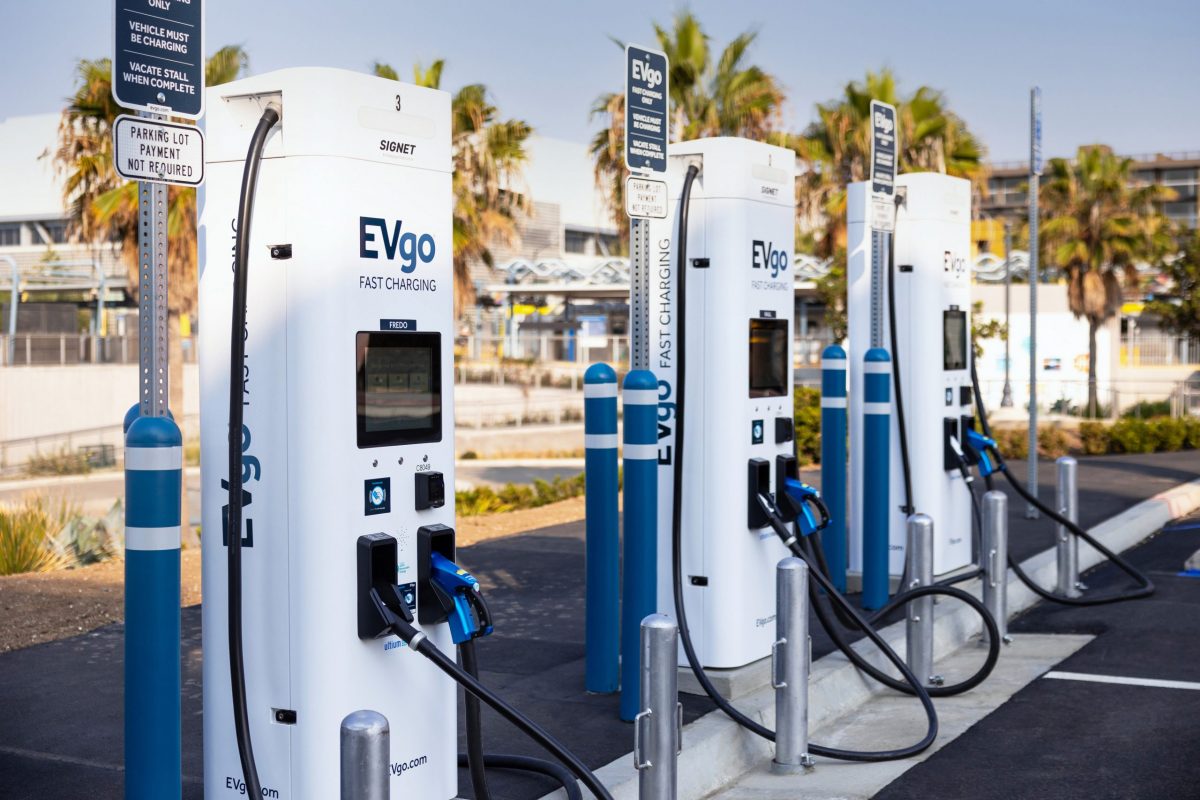Fuel light bingo – how many fuel stations can you drive past before the fear of running out of fuel kicks in? For drivers of electric vehicles (EVs), this is a riskier game – and a game they play far too frequently, whether they like it or not. Without the abundance of fuel stations to reassure them, confidence in making it to a charging station diminishes – hence the phrase ‘range anxiety’.

Global EV charging station numbers are expected to soar from 135,000 in 2011 to 10.7 million by 2020, according to a report by IMS Research. Until then, drivers of EVs will need to continue planning their routes around known charging point availability.
Elektrobit (EB) software and hardware technology powers more than 75 million vehicles worldwide. Despite differences in propulsion, Walter Sullivan, who heads up the company’s new facilities in Silicon Valley, believes that the electric car is not so different from its oil-burning cousin.
“It’s interesting, because in many ways an electric vehicle isn’t that different from a non-electric vehicle,” he says. “It still needs a navigation system, it still needs an HMI, and the ECUs still need to communicate with each other, so in some ways it’s similar to any car for us, but it has some unique challenges.”
Painting a picture
Sullivan explains that the HMI in an EV needs to present information to ensure the driver is comfortable with the vehicle’s ability to reach the destination, or if the charge is low, to find a charging station in time. “The navigation system that we build needs to calculate a route that is friendly to an EV and present the user with a visual boundary that illustrates how far the car can go,” he says. This varies according to traffic conditions, road elevation and other factors, but because EVs and traditional internal combustion engine (ICE) cars share similarities in the HMI, many of EB’s products are also able to address EVs.
The VW e-Golf uses almost all of EB’s product technologies, which the OEM adapted to suit its specific needs, explains Sullivan. “VW used our HMI tool for designing the interface in the vehicle itself, so they were able to customise it. They adapted the traditional infotainment unit that is used across the rest of the Golf range with some unique HMIs for the electric side. The navigation system and the ECU that manages the charging of that system is from an EB software stack. It’s fairly unique, and a good example of how we can address e-mobility,” he says.
Making charging accessible
EB’s navigation system has an interface that can connect to an external data source, such as a charging station, and “will provide assurance to the driver that when they get to where they are going, they can charge it.”
Daimler’s car2go provides car sharing services in European and North American cities using smart fortwo cars as one-way point-to-point rentals. To make the driver aware of designated car2go parking spots, their locations are fed into Street Director – EB’s navigation system – from an external server. Free spots appear in green and occupied spots in red.
Sullivan believes this can translate across to navigation systems used in EVs to show the location of available charging stations: “From an online service, we can get the available parking spaces for the smart cars and actually direct the driver to an available spot. We don’t have that for charging stations yet, but it is easy to make that mental extension.”
Face your fears…
Sullivan believes the industry can improve its ability to calculate routes in order to optimise battery usage in an EV, the key to the supply of information the driver receives. Information about the condition of the battery, how much charge is left and how far they can expect to travel helps to alleviate range anxiety, he says: “The information being presented can help drivers make informed decisions about how they use that vehicle.” Eventually, he hopes this will become “a non-issue” when battery technologies improve in future, “but for now, it’s something we’re trying to tackle.”
A secondary problem that supplements range anxiety – and possibly exacerbates it – is the fact that EV drivers have to plan longer journeys more thoroughly to incorporate a route with charging stations along the way, or at least local to the end destination. This can be especially problematic in remote areas. Presenting this information to the driver does not eliminate the need to plan a journey, but Sullivan believes this will significantly help in reducing the uncertainty of a journey, and adds that this is not just a problem reserved for EV drivers. “Any time you have a finite resource at one end of your journey, that journey needs planning. We’re producing the technology that’s improving the efficiency of that process,” he states.
Suppliers are developing smartphone applications (apps) that show the user how much charge the battery has left, and can estimate the time remaining to reach a state of full charge. While EB does not produce similar apps, Sullivan explains that its technology is the ‘middle-man’ in this scenario. In the case of the e-Golf – to the extent that the car itself is getting the charge level for the battery and sending it to the phone – “that comes through the module using our software that is managing the charge,” he says. “But as far as the technology on the phone itself is concerned, that’s down to the phone applications developed by everyone else. We have the software that supports these apps.”
For Elektrobit – and electromobility on the whole – range anxiety is the primary barrier to EV adoption for consumers. The main contributor to this is not something EB can counter directly, but can address using HMI tools and intelligent navigation systems. As battery technology improves to meet a similar range available in conventionally-fuelled vehicles, the fear of losing charge is expected to dissipate.
Freddie Holmes



